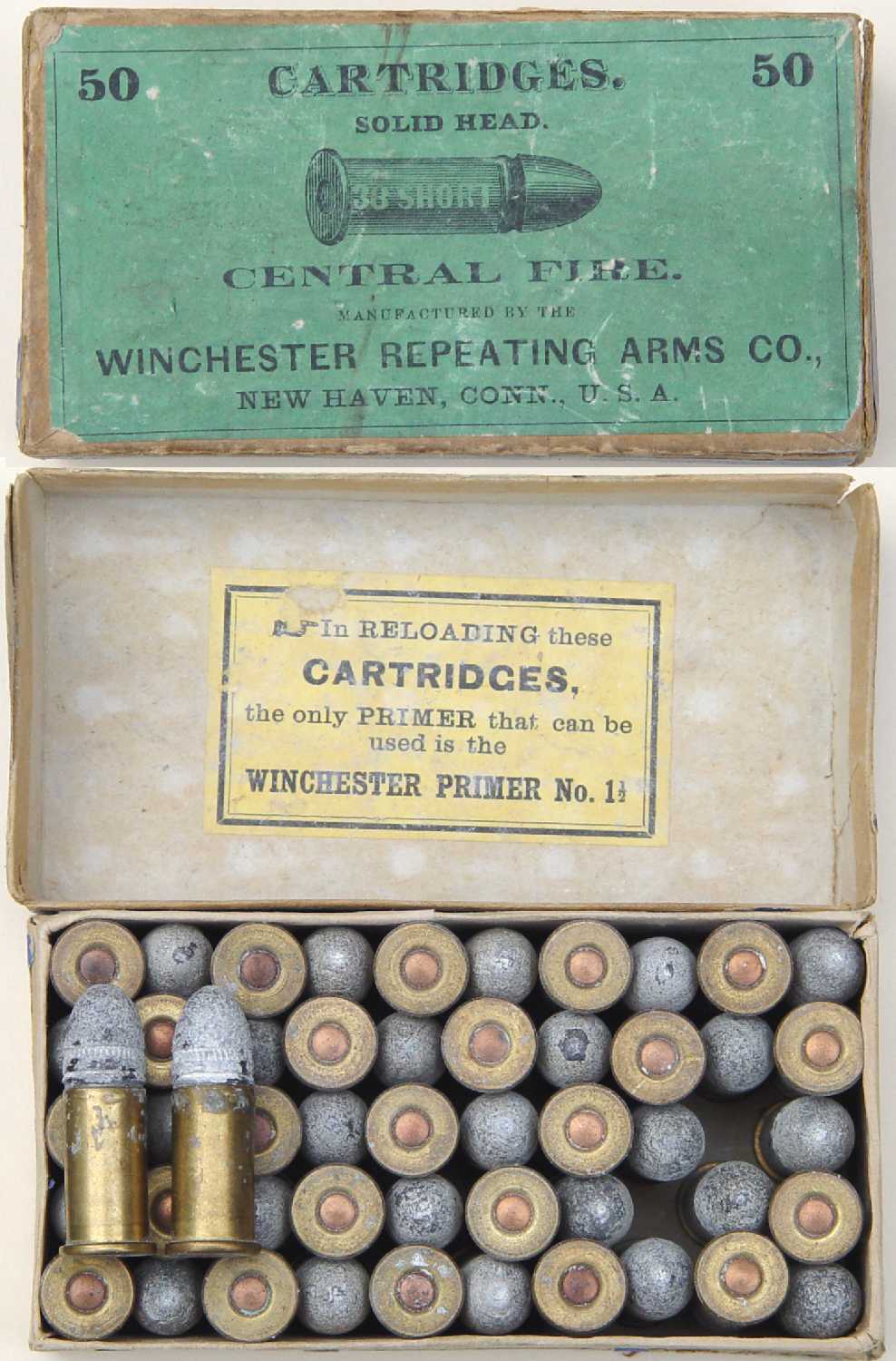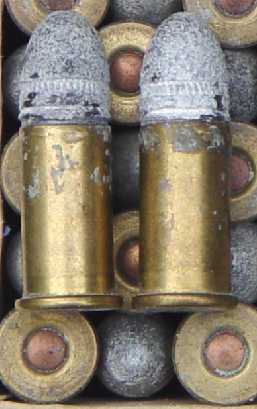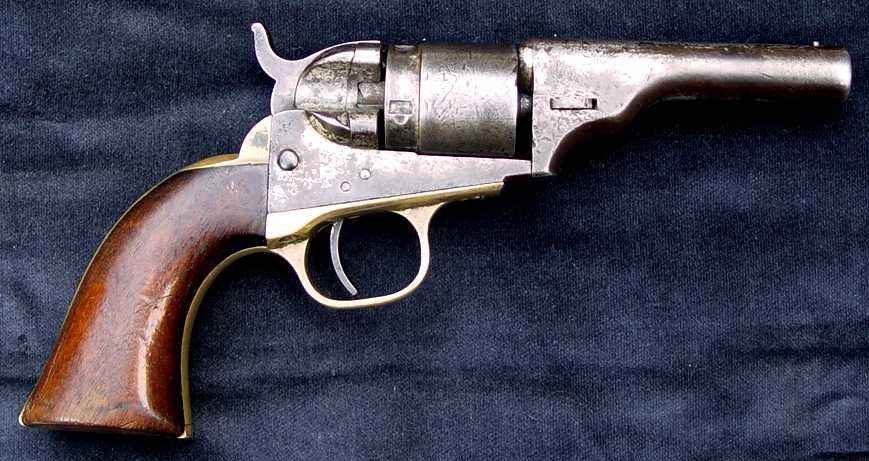|
THE CARTRIDGE COLLECTOR'S EXCHANGE |
| Contents
Cartridge
Lists
Prior Picture Pages:
Links to Other Sites
Cartridge Collectors Organizations:
Auctions:
Books:
Other Collector's Sites: |
Home of the Old Ammo Guy's Virtual
Cartridge Trading Table
Picture Page May 2007 An early Remington Arms-UMC box of .41 Shorts....
This two piece half split Remington Arms-Union Metallic Cartridge Company box of .41 short rimfire cartridges was made in 1912 or 1913, as indicated by the presence of each company's trade marked logo on the label. In 1912, the two companies had an informal joint arrangement for the production of ammunition. Within a couple of years a combined logo came into use, which added the name 'Remington' to the old 'UMC' red ball logo. In 1916, the company name was changed to Remington Arms-Union Metallic Cartridge Company Incorporated following the formal merger of the two companies in that year. . . And an early Winchester box of .38 Shorts......
This two piece half split box of Winchester .38 Short Colt cartridges was
probably made in the early 1880s. While the label indicates the cases have
solid heads, the concentric rings on the heads give them the appearance of
being of folded head construction. Unfortunately, I will probably never know
one way or the other; since it is a full box, I can't bring myself to
sacrifice one for sectioning to settle this question. A similar box is shown
on page 118 of One Hundred Years of Winchester Cartridge Boxes 1856 -
1956 by Ray Giles and Dan Shuey, but their box includes 'For Colt's
Revolvers' on the label. Correspondence with Mr. Shuey revealed that this
box without the Colts reference is probably the earlier of the two boxes. As
indicated on the label inside the box top, these cartridges use the # 1 1/2
primer. The copper 1 1/2 primer was intended for use in handguns, being
softer than brass and more easily detonated by the lighter firing pin blows
inherent in handguns. The knurled groove bullets indicate that these
are outside These cartridges would have originally been purchased for use in an early centerfire cartridge revolver, a multitude of which first became available beginning in the early 1870s. An example is the .38 caliber 5 shot 3 1/2" round barrel revolver shown below, one of a number of models introduced by Colt Patent Firearms Mfg Co during its transition from being one of the worlds leading manufacturers of percussion firearms to establishing itself in what was to become a much more competitive market for firearms that used the new self-contained metallic cartridges. . .. .
. . . . . . . . . . A shell that will 'Shew'(??) the flight of the shot.......
Over the years, there have been lots of innovations in shotgun shells; Stoneco Shell Crackers for dispersing flocks of birds and the colorful, clear plastic Wanda shells readily come to mind. Here's an idea that may have seemed like a good idea on paper, but probably lacked the practicality necessary to catch on with the shooting public. These 12 gauge Eley "Rocket" shotshells fire a tracer projectile along with the shot load to allow the shooter to determine visually if he's leading his target appropriately. Of course, they would have also pointed out clearly to one's shooting buddies just how poor a shot he was, eliminating his opportunity to blame a missed shot on some factor other than his lousy aim. I imagine it would also have been too easy to start a forest fire with a low shot were these shells carried along for fall shooting amongst the dried leaves and grass. Note the word 'shew' on the top and side labels ('Shews the flight of the shot'); my 1914 edition of Webster's dictionary lists it as an archaic variation of the word 'show', with the same pronunciation. On the shell in the picture below however, they have opted to spell it 'show' ('Shows the flight of the shot'), perhaps in deference to the Yank hunters whom the company was hoping might have a hankering for these shells.
. . . . |


 lubricated cartridges, as does the presence of the waxy lubricant adhering
to and staining the necks of the cases.
lubricated cartridges, as does the presence of the waxy lubricant adhering
to and staining the necks of the cases. 